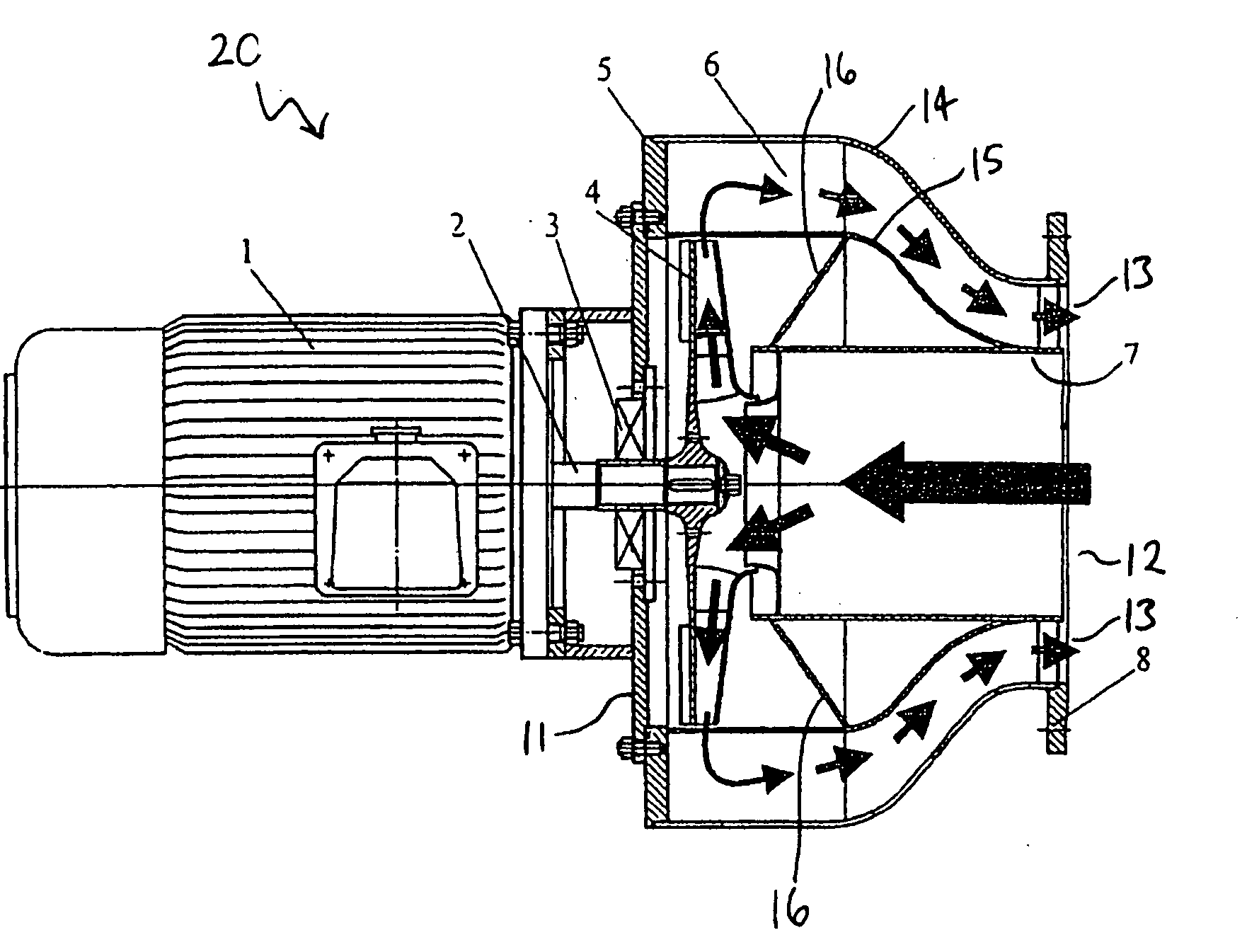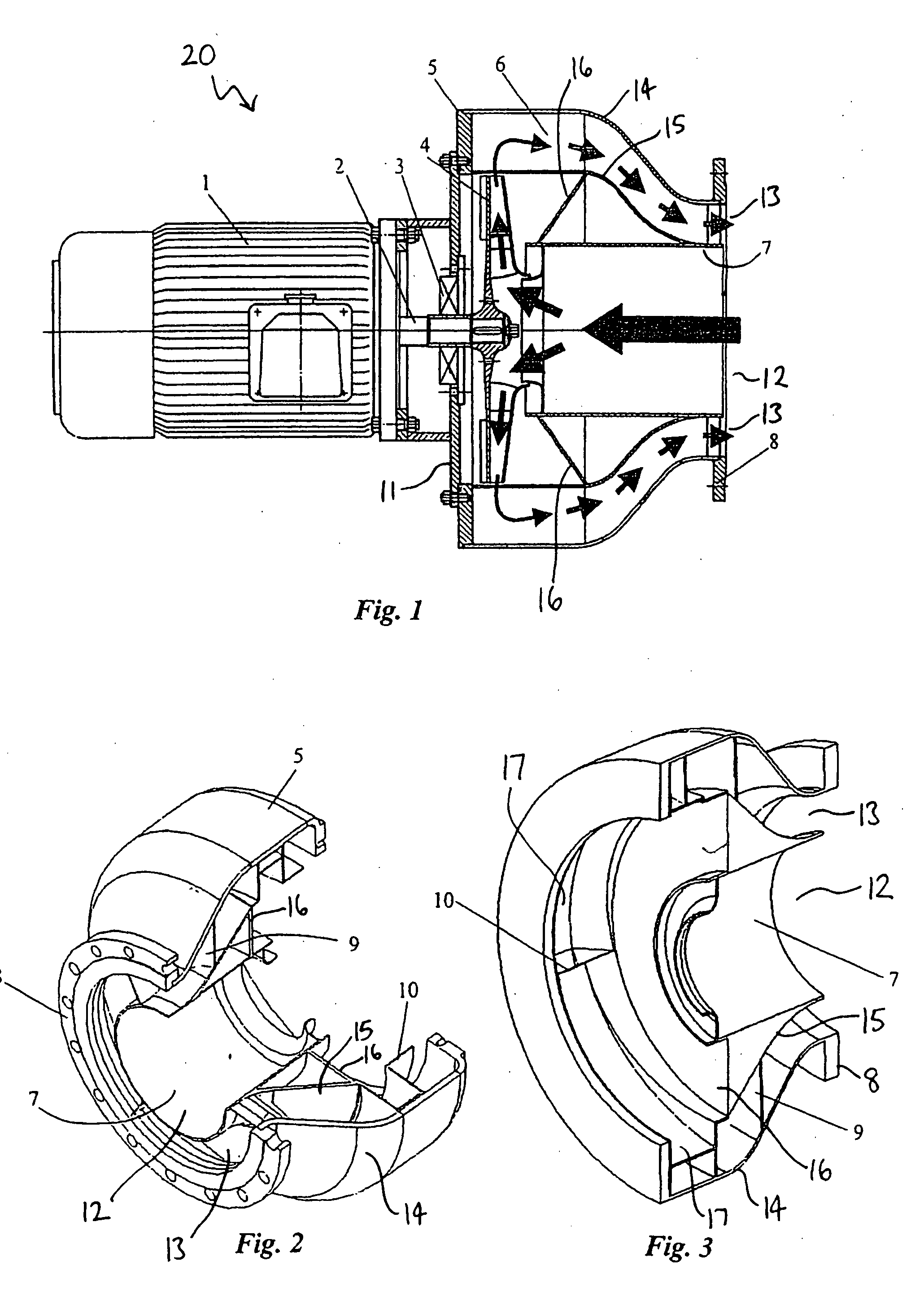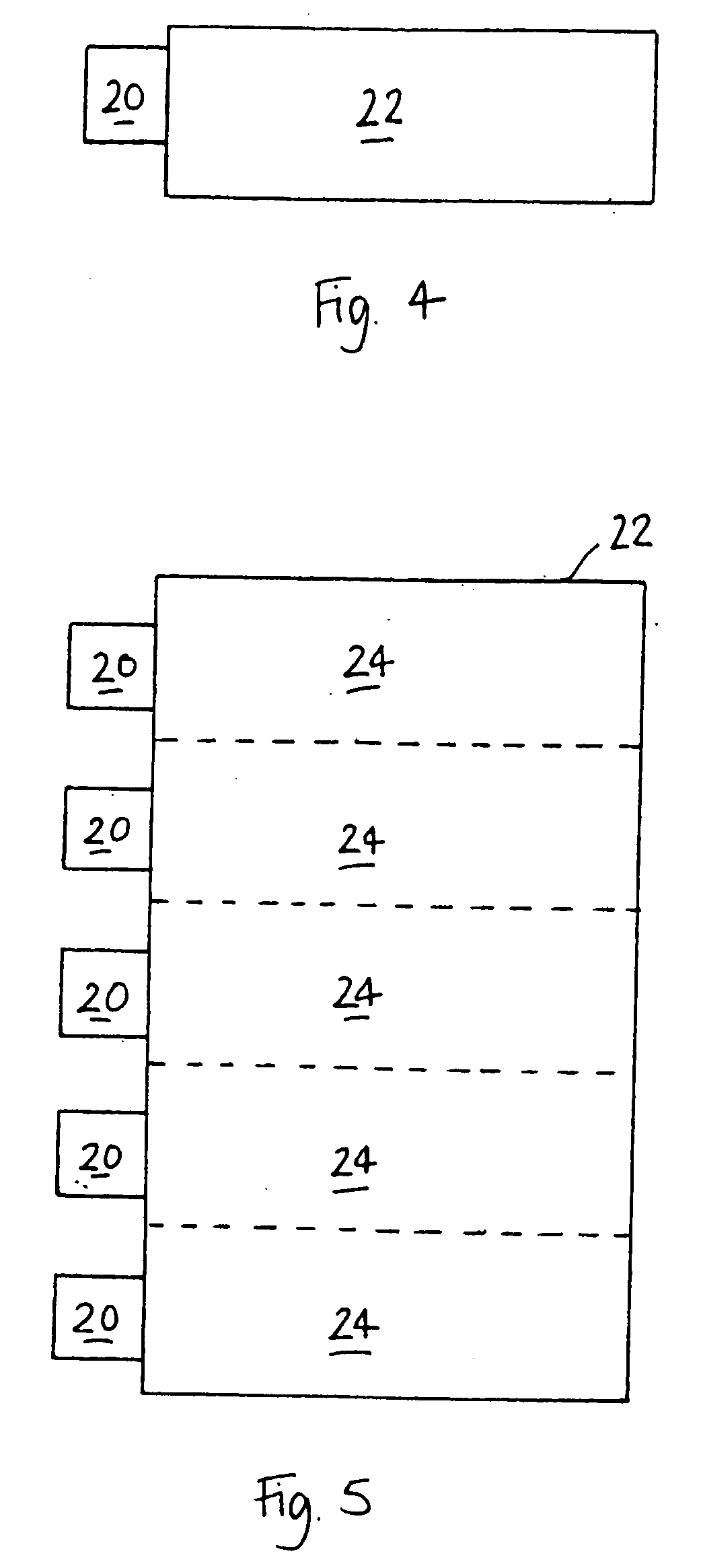Blower for a textiles processing machine
- Summary
- Abstract
- Description
- Claims
- Application Information
AI Technical Summary
Benefits of technology
Problems solved by technology
Method used
Image
Examples
Embodiment Construction
[0023]FIG. 1 shows a cross-sectional view of an embodiment of a blower according to the present invention. The blower 20 comprises two main parts: an impeller, and a housing defining an air intake and an air outlet. The impeller 4 may be any conventional impeller used for air blowers and fans. It is substantially dish-shaped and has a plurality of impeller blades extending radially from a central hub. The hub of the impeller 4 is mounted on a drive shaft 2 of a driving motor 1, by which the impeller can be rotated in the conventional manner.
[0024]Fitted over the impeller 4 is a housing 5, which is mounted to the driving motor 1 by a rear plate 11, through which the drive shaft 2 extends. The housing 5 is circular in cross-section (in a plane orthogonal to the rotational axis of the impeller 4) and is positioned concentrically with the impeller 4 and the drive shaft 2. A mechanical seal 3 is disposed between the rear plate 11 and the drive shaft 2, to isolate the housing 5 from vibra...
PUM
 Login to View More
Login to View More Abstract
Description
Claims
Application Information
 Login to View More
Login to View More - R&D
- Intellectual Property
- Life Sciences
- Materials
- Tech Scout
- Unparalleled Data Quality
- Higher Quality Content
- 60% Fewer Hallucinations
Browse by: Latest US Patents, China's latest patents, Technical Efficacy Thesaurus, Application Domain, Technology Topic, Popular Technical Reports.
© 2025 PatSnap. All rights reserved.Legal|Privacy policy|Modern Slavery Act Transparency Statement|Sitemap|About US| Contact US: help@patsnap.com



